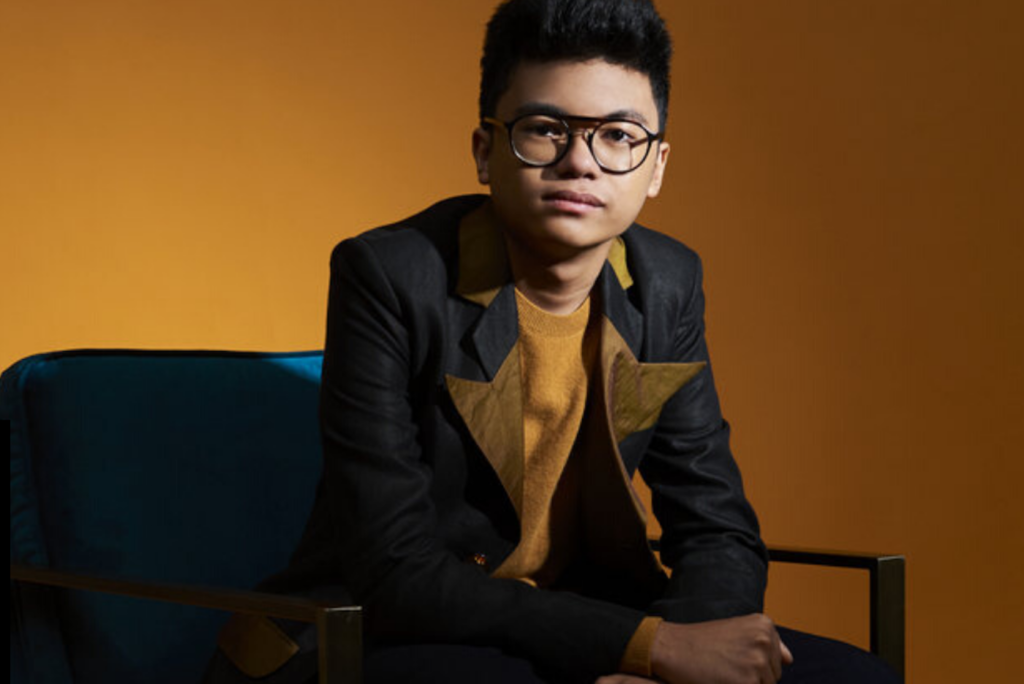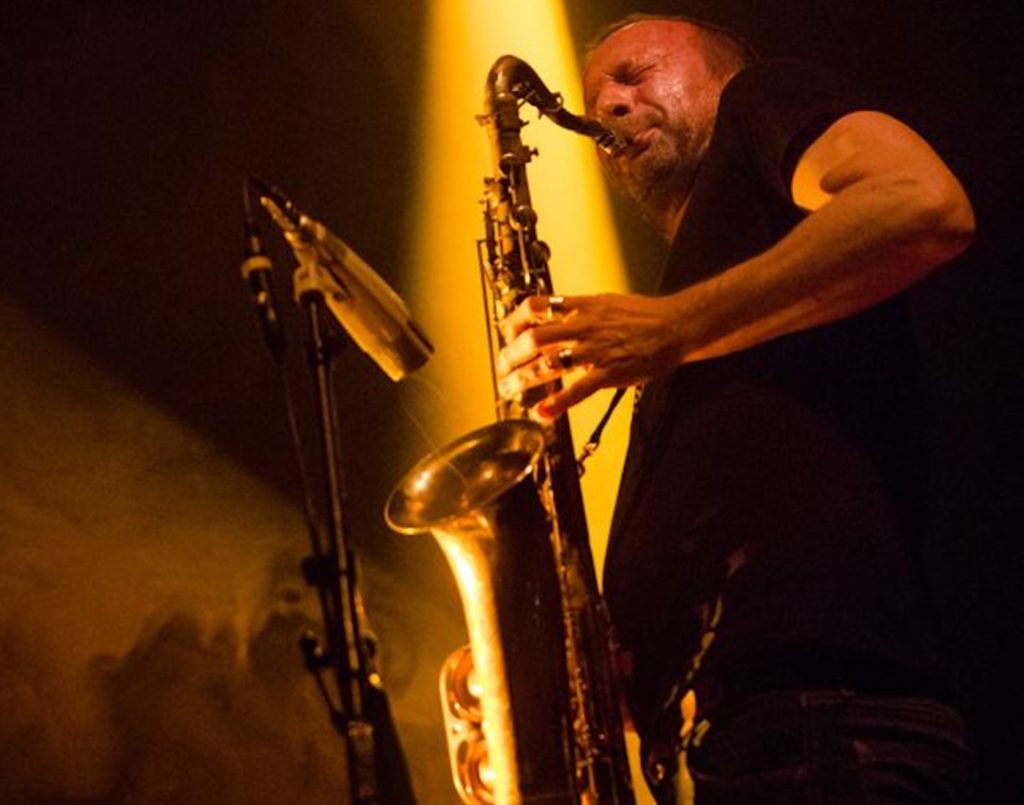
As the Edmonton International Jazz Festival is nearing the end, executive director Kent Sangster reflects on the challenges of turning a live music festival into a virtual event, the creativity and resilience of participating artists, and what the viewers can still expect to see before it’s over.
This year’s line-up included artists like Jocelyn Gould, Julian Lage, Ernesto Cervini, Bria Skonberg, Shelley Jones & A Touch of Cole and Andrew Glover Band. The festival’s program features a combination of livestream performances, pre-recorded videos and short interviews. You can find past performances and sessions on the website. The festival runs until July 31. We spoke to Sangster about how the jazz festival was organized, and received by the audiences this year.
What are the challenges that came with organizing the jazz festival as a virtual event for the first time?
Kent Sangster: Initially, I would say that the biggest challenge was how to react after they announced that we couldn’t have a festival due to the pandemic. Because it was kind of unprecedented — in the time I’ve been involved in the festival, which is over 15 years now, it was the first time we couldn’t have a live festival. So we initially decided to not do anything. Then Calgary’s International Jazz Days, I think they were the first festival that stepped up and offered online stuff. And then, other jazz organizations in the world started to stream. So we knew we could do something. But then it became clear to us that live-streaming and literally streaming over someone’s phone in the living room was growing old pretty quick, and people’s attention span just wasn’t there. And, understandably so, because we’ve spent a lot of time on phones and laptops.
So we started with the idea that whatever artists we are going to present, and however we do that over the online platform, it would be musicians that we had already contacted and that committed to a live performance in 2020. And we are committed to bringing all of the people that we confirmed last year, here for next year. So in a way, these short interview performances, which is a model that we came up with, it’s like a sneak preview for what will come next year. Of course, the main reason to do this is to get jazz music to the people that like it, employ jazz musicians and try to promote it in a way that’s efficient.

Why was it important for your team to put on the event in a virtual format this year?
KS: At the very base level of it, our organization exists to present a festival. We were given funding. So there was a little bit of responsibility to deliver something. Because, there are all of those things, where our initial mandate really would be to provide jazz music, support, good music to people who appreciate jazz music and support the jazz artists. But there are also other partners in play, there are hotels, there are publicity companies, there are media and, all of that, there’s a trickle-down effect that is connecting us, stems of connection that support one another. So there is a little bit of responsibility to do this. What the frightening thing at the beginning was, what on earth can you do? And then, right from the get-go, everybody was like “well, you have to stream.” That became tough, but we were still trying to figure it out.
We presented something that we came up with – instead of doing 10 straight days, which might be quite exhausting. And these videos are also fairly time-consuming to put together. So what happens is you have to get ahead of them. It’s like a factory, you have to get ahead of the assembly line. So you’re producing out enough product as the timeline rolls out.
How have the musicians adapted to the online format?
KS: I think, remarkably well. I think they’re really well equipped to deal with this. Some remarkably so, in terms of their technical abilities and getting really good sound, knowing how to get your music out on different platforms, using social media to promote their shows. And then I think they’re also very appreciative of the fact that we have reached out to them, but it works both ways – because we’re extremely appreciative of the fact they’re willing to essentially organize a concert by themselves or a duel in their studios or sometimes in their living rooms, but they have the ability to make sure that their camera looks decent and their audio sounds good.

It’s amazing and the reason why I’m saying that it’s amazing, is that I’m a musician myself. And it’s one thing to play really well in front of an audience. And that has its challenges, but in some ways, it’s a lot harder to play really well to nobody. And it’s a new world, it’s kind of surreal, because you’re playing into a video camera and trying to look through this tiny hole, but on the other side is where the new audiences are, at least for this short future here. I think things will correct themselves or come back as quasi-normal, but streaming is going to be here forever now.
What has the response been so far?
KS:I personally have received some very nice emails thanking us for doing something, we haven’t really seen any negative feedback, which is nice. Because one of the neat aspects of the national and international artists that we’re bringing in, these are people that you know, we have content that is very unique, and it’s bringing something to Edmonton that is not happening anywhere else, really, in terms of jazz.
So we were able to focus on national and international artists a little bit more. Of course, the support of the Edmonton artists to perform live is where that’s kind of a natural fit. So there’s a priority there. But it’s really also just a reality because we’re not really able to bring anybody in right now, because no one’s flying. The reaction is good. The other thing I also am trying to keep aware of is that people want to balance out their lives. So if they were not necessarily checking out the Jazz Festival when we were doing it in real-time, they still had a month to check it out.
If you had to do it again, what would you do differently?
KS: I know one thing we would stick to, is shorter content. I don’t want to say less is more, but the longer the content is, the longer you expect somebody to stick around. And also, the longer it is to prepare, edit and finalize. So I think a 30-minute format is pretty cool. If we had to do it again, depending on how many shows and how many artists we’re presenting, we may be in a situation where we’re trying to generate some revenue from the shows. But I would like to think if we’re still in this same kind of situation, then it’s our responsibility, that whatever we present, we can do it in such a way that we can afford it. Because we have been given the funding, but again, we don’t know what’s happening next year, we just don’t. And also we don’t know what’s happening with the Alberta economy. So there’s a couple of things in play here that could steer what we do.
How can the viewers support artists who are participating in this year’s virtual festival, especially local musicians?
KS: All of the artists that we hired, they are getting paid. We’ve agreed to a fair wage. And what we have done, is through the festival website, what we’re asking for — if it’s possible, that people donate to a set of charities that we have assigned on the website.
As far as how they can support Edmonton musicians, is just by keeping their eyes and ears peeled to social media and just being aware of where some musicians are playing and go out and support the concert as they probably have a donation box, because not all musicians are fully paid before they play. Social media is a good way to keep up with that.
How long will the previous sessions and the recorded videos remain on the website?
KS: It’s going to be available until July 31. A lot of people definitely get to it after the fact, which is nice. And the reason for that is that we’re being very respectful of the musicians who have agreed to this one-time viewing and one-month thing, where it’s available, and then we may bring it back. But hopefully, we’ll be playing live before we have to think about whether we’re bringing some of that stuff back. But we definitely will have some content on the website going forward, there is going to be more and more of this kind of material.
Assuming next year, things will go back to normal and the live festivals are permitted to happen again, are there any aspects of the virtual event that you would incorporate in the live event?
KS: I think what we could do, is just adding a little interview and a little snippet of somebody’s music, that would be a really cool way to promote the concert for next year. And I don’t know how many we could do, because there’s a cost to that.
Now, some people may say, “well, you could just go to their website.” But if we do it on our website and actually do the interview, it really brings people somewhere where they know they can find really good information about jazz. The other thing is that if streaming has become standard practice, what that could mean, is that we could get a live stream of a jazz headliner, like a jazz legend that really is only playing in one performance, rather than see if they can fit the routing in and get here live. Someone like Herbie Hancock, or a legend like that, and if they couldn’t quite get it in the routing to come to Edmonton, maybe we could get that livestream from Toronto’s performance, and stream it on our own website. I think it’s just about access to the artists.
Which artists can the viewers still expect to see this weekend?
KS: There are two shows on July 25, which will be Kendrick Scott at 8 p.m., and Mats Gustafsson at 9 p.m. Kendrick Scott is an internationally renowned drummer who lives in New York. Mats Gustafsson is a Swedish saxophone player – he lives in Austria. So those are two really cool interviews. And then on July 26, there will beJoey Alexander at 3 p.m.
And then on July 31, we’ll probably do a wrap-up presentation, on what was the best of this year’s Jazz Festival.








